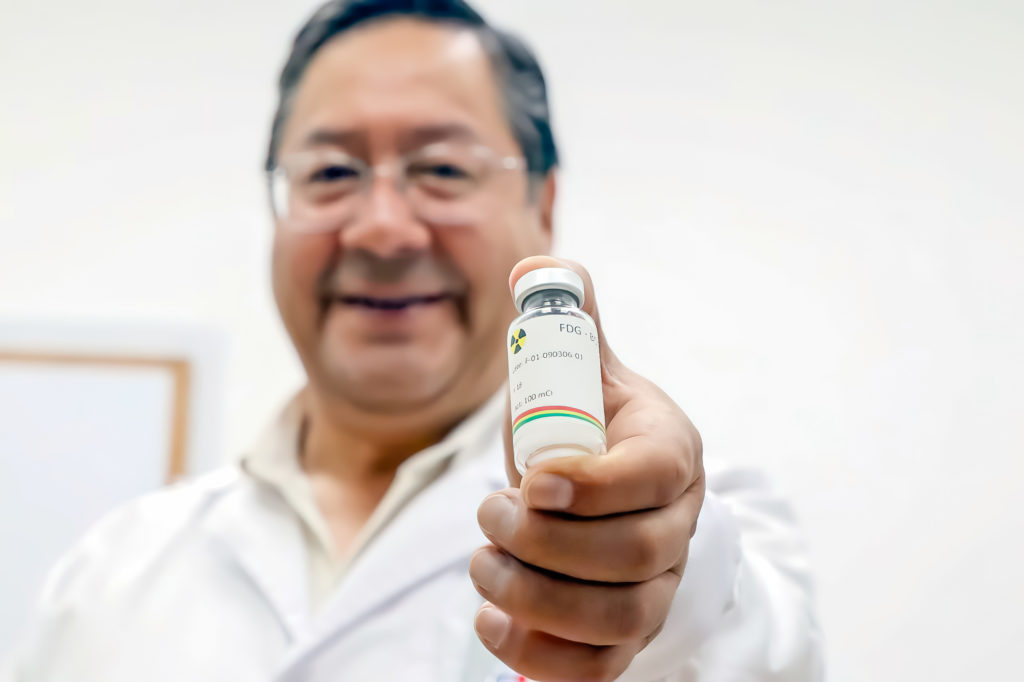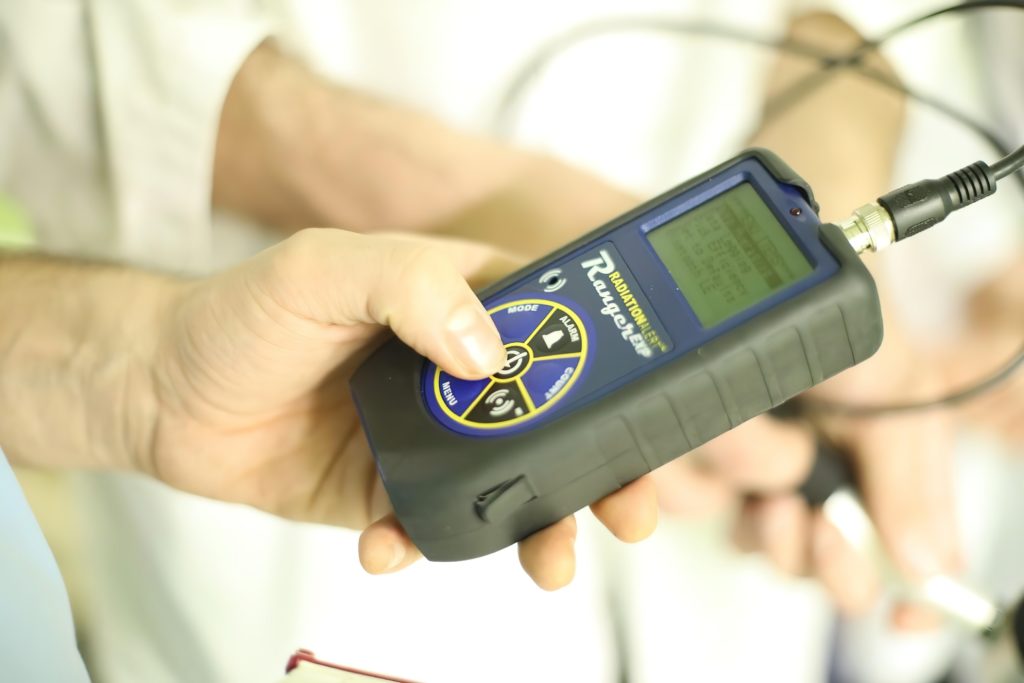
Russia Maximizes Radiopharma
back to contentsThis March, the radiopharmaceuticals production facility built by Rosatom in Bolivia began supplying fluorodeoxyglucose to Bolivian hospitals. In South Africa, Rosatom representatives spoke about actinium-225, which is already used in Russia to treat cancer. In this article, we tell you about Rosatom’s achievements in the global market of radiopharmaceuticals.
On the way to radiopharma independence
“Fluorodeoxyglucose is rightfully called ‘the molecule of the century’. It is used in positron emission tomography (PET) scanning of bodily organs and tissues, which is often combined with computer tomography or magnetic resonance imaging,” says Evgeny Pakermanov, President of Rusatom Overseas.
Rusatom Overseas is building a nuclear research and technology center (NRTC) in El Alto, Bolivia. One of the NRTC facilities is a cyclotron designed to fabricate radioisotopes (for example, fluorine-18) and radiopharmaceuticals (for example, fluorodeoxyglucose).
Fluorodeoxyglucose is a sterile, clear solution administered intravenously. Its function is to deliver a molecule analogous to natural glucose and labeled with the radioisotope fluorine-18 to the area under examination. Once in the body, the radioisotope, like a flashlight, illuminates formations in which glucose absorption is too intense. This characterizes malignant cells that are metabolically more active than healthy cells. Atypically low glucose accumulation also serves as a marker, for example, of scar formation after a heart attack.
The radiologist sees bright, dark and normal areas on his computer while the patient is in the CT scanner. The method allows detecting pathological foci as small as 4–5 mm in diameter. Such precision is very important for the success of follow-up treatment.
“We now have this nuclear medicine center with the most advanced equipment and, instead of importing, can produce radiopharmaceuticals for cancer diagnostics by ourselves. This technology is so advanced that Bolivia can even export these radiopharmaceuticals to neighboring countries. From now on, we will be able to fight cancer even more effectively!” Bolivian President Luis Alberto Arce Catacora said at the ceremony marking the start of production.
The line of radiopharmaceuticals that can be fabricated at the NRTC will expand. “We have already test-produced three more medical radioisotopes and thus confirmed the possibility of commercially producing a range of radiopharmaceuticals based on them. Carbon-11 is used to diagnose brain tumors, technetium-99m for tumors in the liver and brain, and iodine-123 for the thyroid gland. We have made a launch, and now let’s see which radiopharmaceutical will come next – this is left for the customer to decide,” Evgeny Pakermanov commented.

The NRTC will produce radiopharmaceuticals sufficient to conduct over 5000 diagnostic studies per year. In the future, all three Bolivian nuclear medicine centers will be fully supplied with locally produced radiopharmaceuticals.
Another NRTC facility, a multipurpose irradiation center (MIC), is in a pilot operation mode, with test batches of different types of produce irradiated. Its capacity is 70 tons per day. “The MIC is being prepared for handover to the customer and planned to be put in operation in the near future. The decision on what kind of produce and goods will be processed at the center is, of course, up to the customer,” Evgeny Pakermanov said. As international practice shows, they can be grain crops, vegetables, fruit, cosmetics, and medical products.

The third and fourth NRTC facilities are currently under construction. These are radiobiology and radioecology laboratories, and a water-cooled water-moderated pool-type research reactor with a thermal power of 200 kW. The facilities are planned to be commissioned in 2025.
Meet actinium-225
Rosatom expands the range of radiopharmaceuticals it produces, and the most interesting of them are based on actinium-225. This radioisotope is used to treat inoperable metastatic cancer, primarily of the prostate gland.
In late February and early March 2023, representatives of Izotop (Rosatom’s isotope supplier) and the Institute of Physics and Power Engineering (IPPE, one of Rosatom’s producers of medical isotopes) made poster presentations at the 12th International Symposium on Targeted Alpha Therapy in Cape Town, South Africa. They told the audience about the trends in clinical trials of actinium-225-based drugs and production optimization that helped IPPE significantly increase the fabrication of isotopes.
“It is the preferred choice among alpha emitters today. The Russian nuclear corporation is a Top-3 supplier of actinium-225 worldwide and has plans to expand production. It was important for us to underline this fact in our presentation and share our success in producing and supplying actinium-225 as well as to contribute to the development of its consumption in Russia and globally,” says Olga Walsdorf, Head of Marketing at Izotop.
According to her, many medical institutions all over the world use actinium-225, but only for the treatment of certain diseases and have no idea of its potential uses. Rosatom studies this matter comprehensively and consistently analyzes international practice. This helps build sales and advise potential buyers of actinium-225 on other areas of application of radiopharmaceuticals. “The more areas of application there are and the more clinical trials are conducted, the more sustainable demand for actinium-225 is guaranteed,” says Olga Walsdorf.
Several US companies, such as Terra Power, Cardinal Health and Northstar, are investing in the production of actinium-225. It should be noted that the symposium, which used to be of interest mostly to scientists, was attended by representatives of major companies, such as Bayer, Curium, Cardinal Health, Siemens and others. “It may well sound paradoxical, but we benefit from competitors’ ambitions because their activities shape a consumer environment and make the isotope popular. They may even buy our actinium-225 for backup supplies,” Olga Walsdorf stressed.




